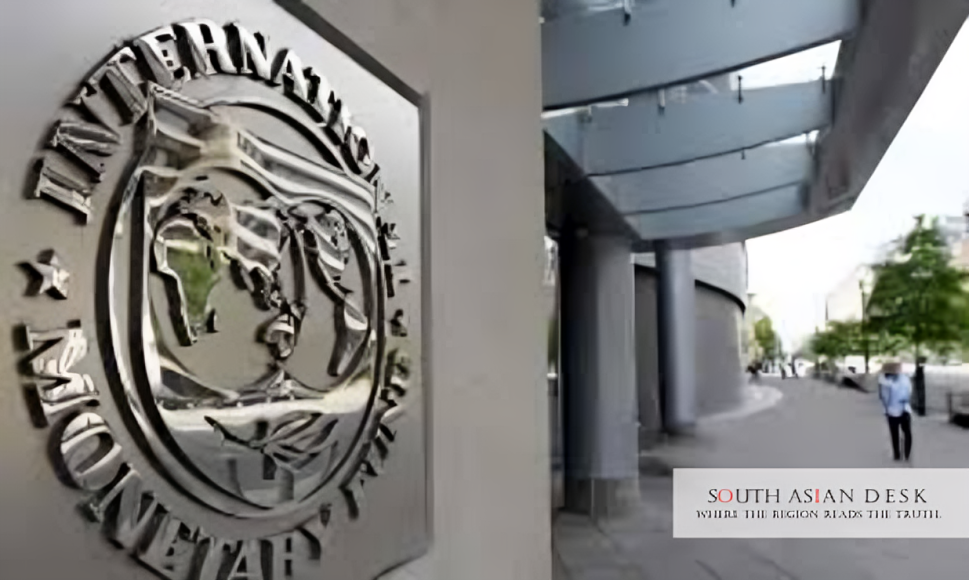International Monetary Fund– IMF warns Pakistan for rising inflation and a shift to current account deficit in its latest World Economic Outlook released on Wednesday, October 15, 2025, projecting average inflation at 6 per cent for the current fiscal year and a 0.4 per cent GDP deficit next year, without factoring in recent flood impacts.
This development underscores potential vulnerabilities in Pakistan’s economy, which could influence regional trade flows and investment in South Asia, where interconnected markets amplify risks from any single nation’s fiscal strains.
Pakistan Economic Outlook IMF Projections
The IMF’s World Economic Outlook for October 2025 estimates Pakistan’s GDP growth at 3.6 per cent for the fiscal year 2025-26. This figure surpasses the World Bank’s 2.6 per cent forecast but remains tentative due to ongoing assessments of summer 2025 floods. The report highlights a global slowdown, with world growth projected at 3.2 per cent in 2025 and 3.1 per cent in 2026.
In the context of Pakistan economic outlook IMF, the projections indicate a moderation from prior stability. Last fiscal year, Pakistan achieved a current account surplus of 0.5 per cent of GDP, as per data from the State Bank of Pakistan and IMF staff reports. However, the IMF warns of a reversal to a Pakistan current account deficit of 0.4 per cent next year, driven by potential increases in imports and external pressures.
Quotes from the IMF report emphasise broader risks: “Risks to the outlook remain tilted to the downside,” stating that prolonged policy uncertainty could dampen consumption and investment. It further notes, “With lower growth prospects, higher real interest rates, elevated debt levels, and new spending needs, such as defence and national security the fiscal equation is becoming more challenging to solve and leaves countries vulnerable should a large external shock occur.”
IMF Warns Pakistan for Rising Inflation & Concerns
The IMF warns Pakistan for rising inflation will climb from 4.5 per cent last year to 6 per cent this fiscal year, based on consumer price index averages. This uptick aligns with global trends where inflation is expected to decline to 4.2 per cent in 2025 but remains sensitive to commodity prices and supply chain disruptions.
Pakistan’s Ministry of Finance, in its Monthly Economic Update and Outlook for October 2024 (treated as latest available), reported that inflation had declined to single digits earlier, with CPI at 9.2 per cent in the first quarter against a forecast of 10.2 per cent. However, the IMF’s forward-looking assessment suggests a rebound, potentially exacerbated by flood-related agricultural losses and energy costs.
An IMF staff report from May 2025 noted a current account surplus of USD 0.7 billion in the first eight months of FY25, equivalent to 0.5 per cent of GDP. This positive base contrasts with the projected shift, highlighting how external factors like reduced aid flows to low-income countries could intensify pressures. The report cautions, “Should these pressures succeed, many of the hard-won credibility gains achieved in policymaking over many decades could be lost.”
Pakistan Current Account Deficit Risks
Delving into Pakistan current account deficit, the IMF projects a transition from surplus to deficit amid slowing world trade growth at 2.9 per cent in 2025-26, down from 3.5 per cent in 2024. For Pakistan, this could mean higher import bills if reconstruction post-floods boosts demand for materials.
State Bank of Pakistan data, updated as of September 19, 2025, shows current account Credits and debits but lacks specific figures for October. Earlier clarifications from the SBP in October 2025 indicated no significant revisions to trade data, maintaining stability in reported balances.
Finance Minister Muhammad Aurangzeb, in a December 2024 press release (latest contextual), stated during a high-level delegation meeting: “Pakistan has historically struggled with twin deficits; however, due to improved export performance, the economy is now operating with a surplus in both fiscal and current accounts. Foreign exchange reserves have crossed the $12 billion mark, inflation has been brought down to single digits, and the policy rate is moving in the right direction.” This optimism contrasts with the IMF’s caution, suggesting a need for sustained reforms.
The IMF warns Pakistan rising inflation and deficit risks could be amplified by protectionist measures globally, suppressing investment and disrupting supply chains. Emerging markets like Pakistan face moderated growth just above 4 per cent, with advanced economies at 1.5 per cent.
Background
Pakistan’s economy stabilised after completing a nine-month IMF Stand-By Arrangement in 2024, followed by a 37-month Extended Fund Facility. The first tranche of USD 1.03 billion under the EFF reinforced macroeconomic stability, as per the Ministry of Finance’s October 2024 update. Remittances and exports supported a current account surplus in FY25, but floods in summer 2025 introduce uncertainties not yet quantified in IMF models.
Global context includes U.S. growth slowing to 2 per cent and declining aid to vulnerable nations. The IMF report states: “On an end-of-year basis, global growth is projected to slow down from 3.6pc in 2024 to 2.6pc in 2025.”
What’s Next
Pakistan’s government may respond with fiscal adjustments during the IMF’s next review in the second half of 2025. Focus areas include taxation reforms and energy sector improvements to mitigate Pakistan current account deficit risks. International partners like the World Bank could provide flood recovery aid, potentially altering the Pakistan economic outlook IMF projections.
In conclusion, as the IMF warns Pakistan rising inflation poses ongoing challenges, vigilant policy implementation will be crucial to navigate these headwinds and foster sustainable growth in the region.
Published in SouthAsianDesk, October 15th, 2025
Follow SouthAsianDesk on X, Instagram, and Facebook for insights on business and current affairs from across South Asia.






